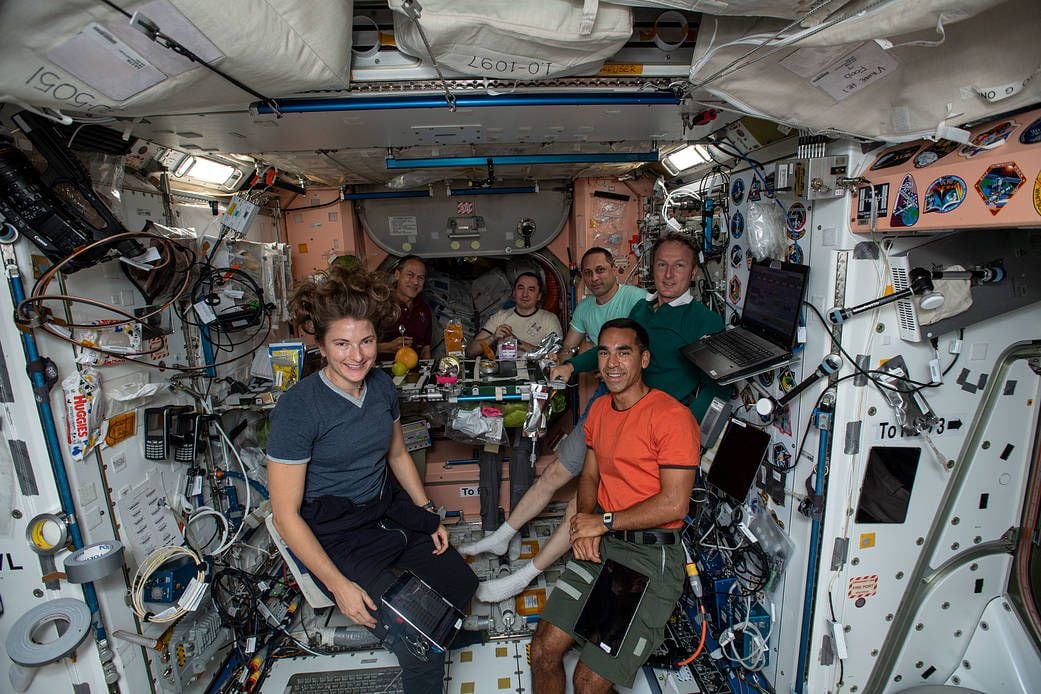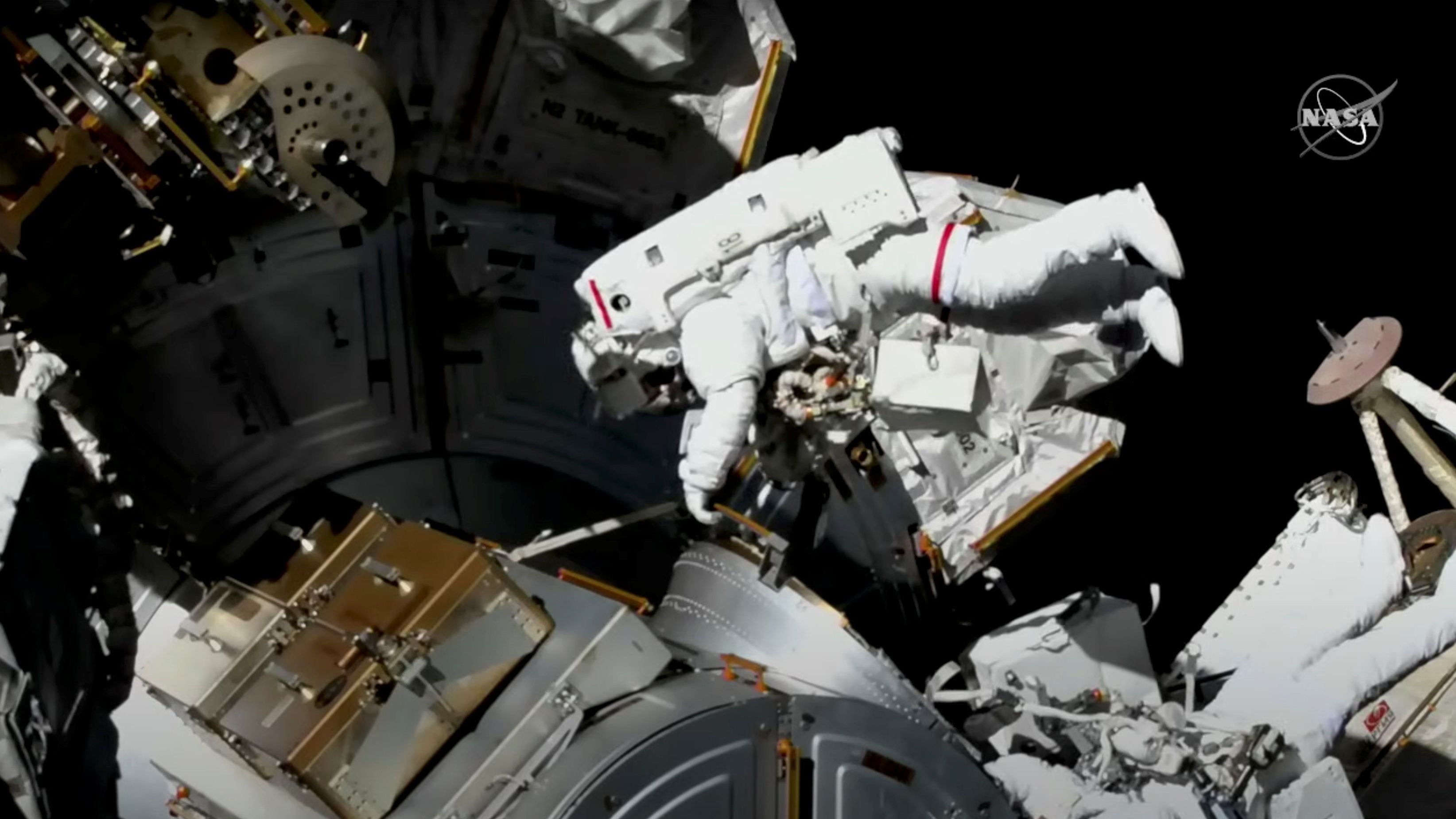
For 24 years, the largest object in space created by man has been orbiting the Earth at a height of 400 kilometers. And for 22 years it has been permanently inhabited.
This is the International Space Station (ISS), which these days runs the risk of stopping functioning and even crashing uncontrollably into some region of the world due to the consequences of Russia's invasion of Ukraine that has been going on for more than a month.
Hours later, after President Vladimir Putin's offensive on Ukraine, US President Joe Biden gave a very in which it condemned Russian action and reported the implementation of strong economic sanctions in various spheres, especially space and technology. “Putin is the aggressor. Putin chose this war, and now he and this country will bear the consequences. Today I authorize heavy additional sanctions and new limitations on what can be exported to Russia. This will impose severe costs on the Russian economy, both immediately and over time. We have purposely designed these sanctions to maximize the long-term impact on Russia and minimize the impact on the US and our allies. Between our actions and those of our allies and partners, we estimate that more than half of Russia's high-tech imports will be cut. This will be a blow to its ability to modernize its armed forces, which will degrade its aerospace industry, including its space program,” said Biden.

While the space program being carried out by the ISS includes the cooperation of several nations, the two backbones of it are the astronauts, technology, food and spare parts provided by the United States and Russia in an alliance that ignores the political ties that take place 400 kilometers from the Earth.
Yesterday, the director general of the Russian space agency Roscosmos, Dmitri Rogozin, issued an ultimatum to the United States: “March 31 is the last day that NASA, the European Space Agency (ESA) and the Canadian Space Agency (CSA) have to respond to our demand that sanctions be lifted against two of our companies civilians "; TSNiiMash, of mechanical engineering research, and the Progress Rocket Space Centre”.
Western sanctions imposed on Russia place restrictions on the export of goods and high technology with the intention of weakening its strategic sectors, including the military and its aerospace industry. “The ISS is a large space laboratory that orbits the Earth and needs collaboration between Russia and the United States to function fully. It is not possible to keep orbiting the planet 400 kilometers away without the permanent collaboration between the two nations, between the two space agencies NASA and Roscosmos,” space journalist Diego Córdova, author of the book “Huellas on the Moon”, told Infobae.

The operation of the International Space Station is complex. While the modules in the United States and Europe provide the electrical energy that solar panels collect and serve to make the orbital complex work, Russia provides the fuel and engines that allow it to remain in orbit and not end up falling uncontrollably to Earth. Russia supplies the Space Station with the launches of its Progress capsules, which are strategically placed in the orbital structure so that every 15 or 20 days it starts its engines and raises it to maintain the correct height and speed to operate. It even supplies fuel to the laboratory to make it work,” added Córdova, who will present a talk this Friday at the Galileo Galilei Planetarium about the Artemis mission.
He added: “The United States also has ships that are coupled to the orbital complex, such as the Cygnus capsules, but their engines are not as powerful and they are also located at points that do not provide complete stability if they are turned on to give height to the space laboratory.”
According to Córdova, the Earth's gravitational force attracts the ISS, which must correct its height every 15 or 20 days by boosting the Progress engines. If they didn't turn on, the space station would start to lose height and speed. A few days later the structure would begin to rub against the earth's atmosphere and would end up burning and falling uncontrollably.”
That same theory is what Rogozin outlined when he stated that it is impossible to control the ISS without the participation of Russia, since it is the country responsible for the orientation of the station and the forecasting of dangerous collisions, in addition to the supply of fuel and cargo. “If you block cooperation with us, who will save the ISS from an uncontrolled exit from its orbit and fall onto the territory of the United States or Europe?” , the general director and former journalist recently asked in a tweet.
“There is a possibility that this 500-ton structure will fall on India and China. Do you want to threaten them with that perspective? The ISS does not fly over Russia, so all the risks are yours. Are you ready for it? Gentlemen, when you study sanctions, check those who generate them to see if they have Alzheimer's disease,” he added.
In the face of US sanctions, Russia responded by stopping launches for European missions from the Kourou cosmodrome in French Guiana; it stopped supplying rocket engines to the US and demanded that future Roscosmos contracts be charged only in rubles. Roscosmos also canceled the launch of British OneWeb communication satellites, after the company itself, with government support, ceased the future launch of its Soyuz rocket aircraft from the Russian Baikonur cosmodrome, and signed an agreement with SpaceX, Elon Musk's company.

But NASA had to clarify that it will continue to promote space collaboration with Russia. NASA Administrator Bill Nelson has said that the US will continue to cooperate with its partners, including Russia, to continue operations on the ISS. NASA has acknowledged that attempts to separate the US segment from the Russian segment “would pose significant logistical and security challenges given the multitude of external and internal connections, the need to control the inclination and altitude of the spacecraft, and the interdependence of software.”
“For now they do not have the ability to replace the tilt control functions of the space station or to make suitable propulsions for sustained long-term operations. They will try to create a replacement for us with their cargo ships, with their manned ships, but this will take years,” Rogozin warned.
“The station has complex internal and external wiring that make it impossible to separate the modules, which are built to work connected. In the worst case scenario, the end of operations in the orbital complex can be brought forward and it will not reach 2030, as announced in February, before the war,” concluded Córdova.
KEEP READING:
Últimas Noticias
Debanhi Escobar: they secured the motel where she was found lifeless in a cistern
Members of the Specialized Prosecutor's Office in Nuevo León secured the Nueva Castilla Motel as part of the investigations into the case

The oldest person in the world died at the age of 119
Kane Tanaka lived in Japan. She was born six months earlier than George Orwell, the same year that the Wright brothers first flew, and Marie Curie became the first woman to win a Nobel Prize

Macabre find in CDMX: they left a body bagged and tied in a taxi
The body was left in the back seats of the car. It was covered with black bags and tied with industrial tape
The eagles of America will face Manchester City in a duel of legends. Here are the details
The top Mexican football champion will play a match with Pep Guardiola's squad in the Lone Star Cup

Why is it good to bring dogs out to know the world when they are puppies
A so-called protection against the spread of diseases threatens the integral development of dogs




